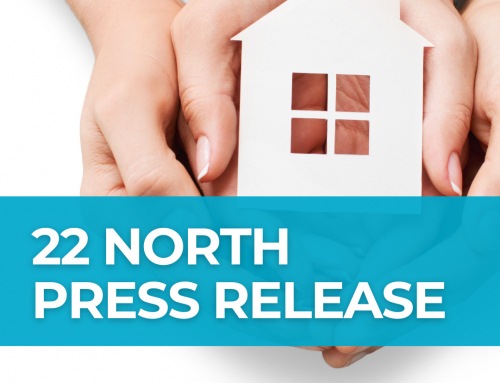The 2023 annual Point in Time (PIT) Count of people experiencing homelessness in Whatcom County showed the highest one-night count since the survey began in 2008. According to the 2023 Point in Time Count Report, released June 12, there was a roughly 27% increase in people counted, from 832 people in 2022 to 1,059 in 2023.
While so much of our work is dedicated to preventing and resolving homelessness, the reality is that people are becoming homeless faster than we can get people into homes.
The Count
The U.S. Department of Housing and Urban Development requires that the nationwide count occurs on a specific night every year in every community. The 2023 count was conducted on January 26. In Whatcom County, this effort is the result of coordination between housing service providers, outreach specialists, non-profit organizations, community volunteers, and administrative staff.
The Volunteer Center of Whatcom County, an Opportunity Council program, coordinated the volunteers and sites that participated in the Point in Time Count. The center requested the participation of other community programs and nonprofits; shared the training and information for the counting effort, created by Marisa Schoeppach, street outreach manager of Opportunity Council’s Homeless Outreach Team; and requested the completed Point in Time Count surveys, which were processed by Opportunity Council Data Analytics Manager Katie Sly. PeaceHealth employees staffed volunteer teams that did surveys at the Bellingham Food Bank, the Washington Department of Social and Health Services, and Opportunity Council’s Maple Alley Inn hot meals program.
Working Together
Whatcom County funds various support programs with partner agencies, including Opportunity Council, for people at risk of becoming homeless or who are unhoused. Those programs include rapid rehousing (short-term rental assistance and supportive services); eviction prevention; landlord/tenant mediation; rental assistance; transitional housing (temporary housing with services for people exiting institutions); permanent supportive housing (affordable housing, intervention, and housing assistance for people experiencing homelessness or with disabilities); and housing case management to help people achieve lasting stability.
Some support program examples in 2022 include $1.5 million to permanent supportive housing and community leasing programs that provide housing and supportive services to over 250 people per year, and between 50 and 60 emergency motel stays per month for families with children who would otherwise be unsheltered.
Who’s Affected Most?
Data shows that homelessness disproportionately affects people who are also experiencing at least one other hardship, like a medical condition, disability, substance use disorder, or being part of a group that faces historical discrimination. For example, since 2019, Whatcom County data has shown a 141% increase in people over 60 experiencing homelessness (68 in 2019 to 164 in 2023), many of whom have chronic health conditions. Read the personal experience of one homeless Whatcom County senior.
From 2022 to 2023, 39% of all surveyed persons were unsheltered; of those, three out of four (74%) slept outside, in a tent or doorway, in a vehicle, or in a similar location. The other 61% used emergency shelters or transitional housing. The number of unsheltered people grew from 182 last year to 348 this year, an increase of 91%.
Seniors accounted for 15% of all people counted and 20% of single-person households. The oldest person counted was 89 years old. Opportunity Council’s soon-to-be-complete Laurel Forest Project will provide senior housing to the Bellingham community, boasting over 50 new apartments.
Data shows persistently elevated rates of homeless families with children. Over the last three years (2021-2023), the number of homeless families counted has averaged 88 households. In the previous three years (2018-2020), the average was 68. The Laurel Forest Project will include a child care facility to fight the local shortage, and Opportunity Council’s new Bellis Fair Project will provide family housing and a five-classroom child care center that will serve about 80 preschool students and toddlers before and after school.
Persons under 18 accounted for 15% of all persons identified in the 2023 Point in Time Count. The youngest person counted was less than a year old. The Bellis Fair Project plans to address this issue with its 62 units of affordable housing for families with children.
14% of people surveyed identified as Hispanic, while only 10% of county residents identify as Hispanic, according to census data. People identifying as Black, African American, or African accounted for 4% of people counted as experiencing homelessness, but only 1% of the county’s population. 10% of people surveyed identified as Native American/Alaska Native, who represent only about 3% of the county population.
Two-thirds of the people surveyed reported having one or more additional challenges: mental illness, chronic substance use, chronic illness, or a physical or developmental disability. This likely represents an undercount of co-occurring illnesses because this data is self-reported and people may choose not to share these challenges with surveyors.
60 veteran households, of which 57 were only one person, were counted.
The Reality
Data has shown the presence of unsheltered homelessness despite shelter availability. It is difficult to meet the needs and preferences of the diverse population experiencing homelessness. Shelter capacity and utilization increased slightly from last year, but did not keep pace with the increase in the number of people experiencing homelessness.
Despite the commendable efforts of many volunteers and nonprofit partners during this year’s Point in Time Count, we know these numbers are an undercount. It is difficult to find and count every unsheltered person. The survey is only of a single night and doesn’t include people who cycle in and out of homelessness. Participation is voluntary, and some chose not to participate.
The full 2023 Whatcom County Point in Time Count Report provides additional information: Read the full report online.
You’re not alone.
Resources are available for those at risk of homelessness. Households who have fallen behind on rent payments should visit the Opportunity Council Rental Assistance webpage or call 360-746-3826. People experiencing homelessness should contact the Community Resource Center by calling 360-734-5121 or visiting 1111 Cornwall Avenue in Bellingham for services.





